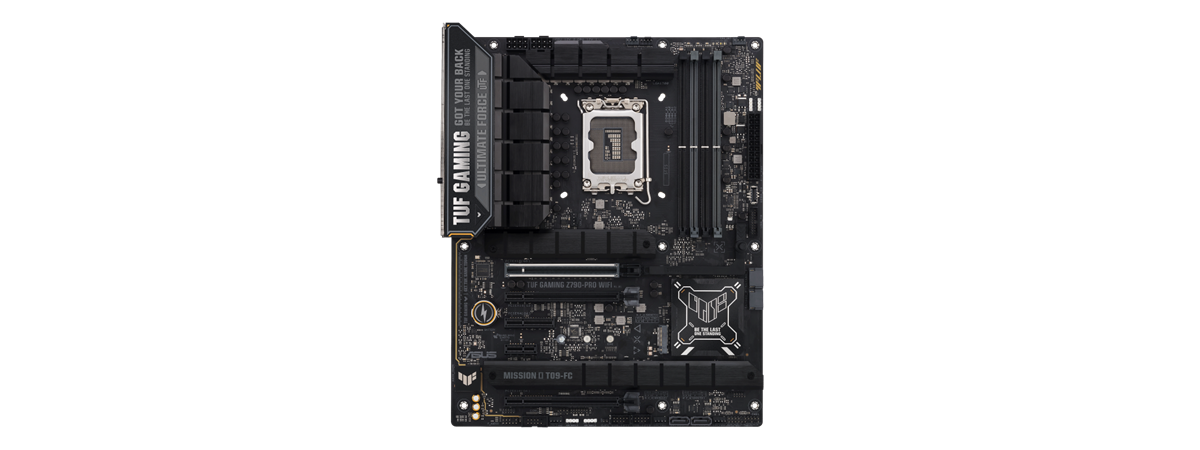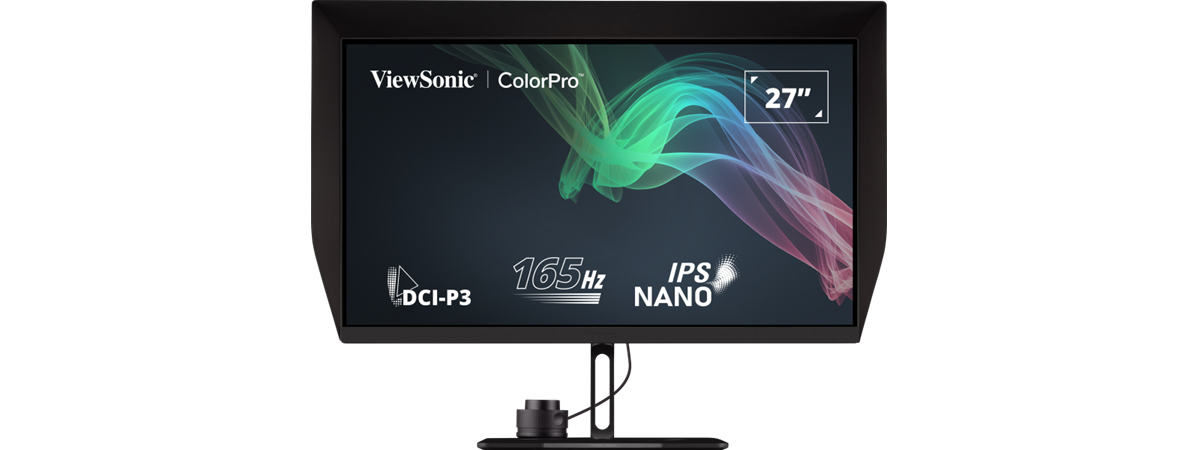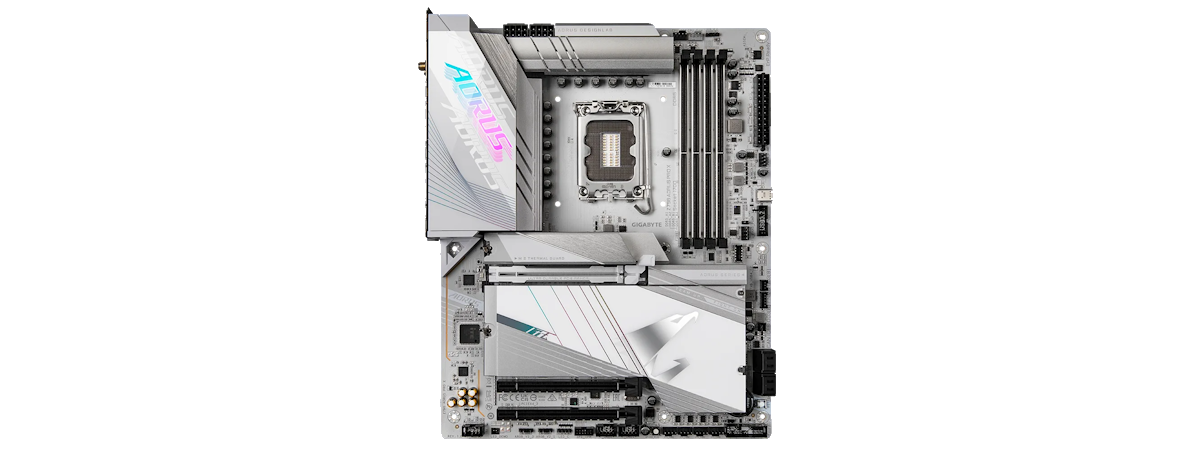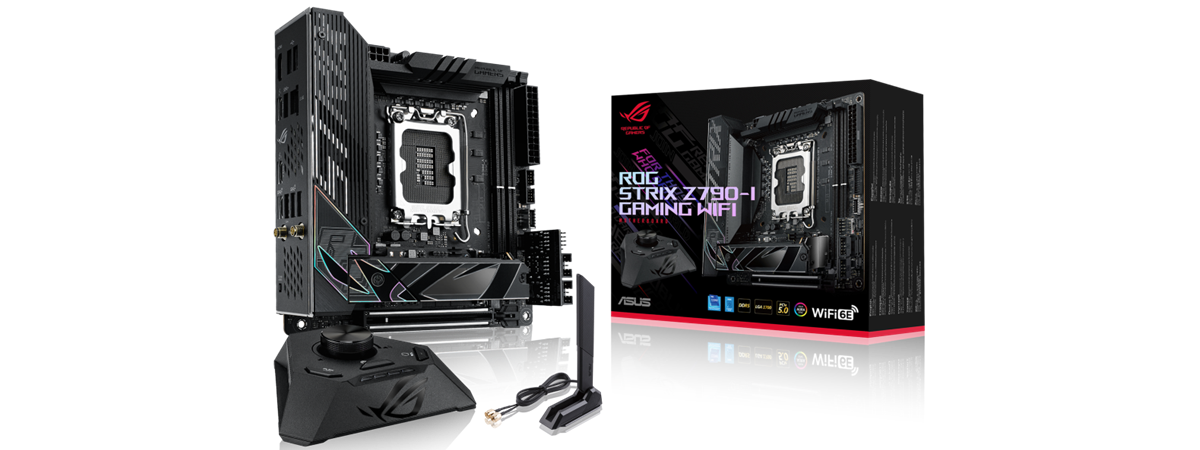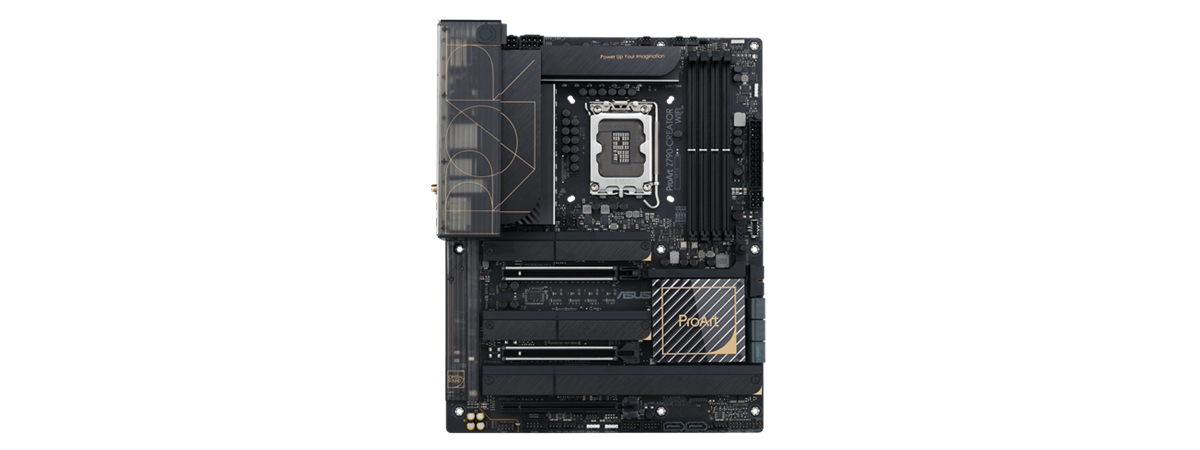
ASUS ProArt Z790-CREATOR WIFI - Benchmark results
I tested the ASUS ProArt Z790-CREATOR WIFI motherboard on a desktop PC with the following hardware and software:
- Processor: Intel Core i9-13900K
- CPU cooler: ASUS ROG Ryuo III 240 ARGB
- Memory: Corsair Dominator Platinum RGB DDR5 32GB
- Graphics Card: AMD Radeon RX 7900 XT
- Storage: Kingston KC3000 NVMe PCIe 4.0 SSD (2TB)
- Power Supply Unit: ASUS ROG Thor 850W Platinum
- Operating System: Windows 11 Pro version 22H2
NOTE: To get a clearer picture of what the motherboard can do, I compared the results I got on it with the ones I previously measured on for another high-end motherboard, the ASUS ROG Strix Z790-A Gaming WiFi D4 (this one uses the same Z790 chipset but works with DDR4 instead of DDR5).
First, I ran CPU-Z’s benchmark tool. In the Single-Thread test, I got almost the same score on both motherboards. In other words, I got the same level of single-core performance from the Intel Core i9-13900K with both the ASUS ProArt Z790-CREATOR WIFI and the ASUS ROG Strix Z790-A Gaming WiFi D4 motherboard.
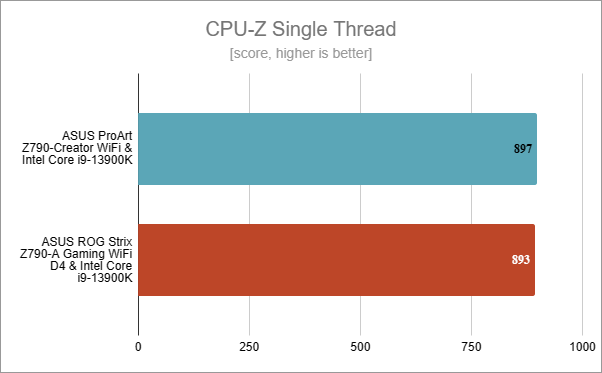
ASUS ProArt Z790-CREATOR WIFI: Benchmark results in CPU-Z Single Thread
In the Multi-Thread test from CPU-Z, the all-core score of the processor was again very similar and inside the margin error on both motherboards. The computing performance of the processor only, no other hardware components involved, is not affected by the motherboard or RAM, for instance.
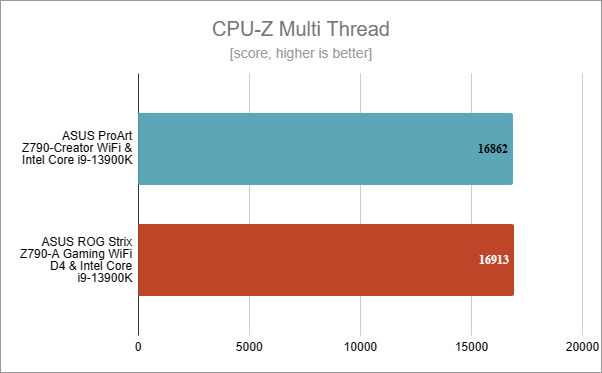
ASUS ProArt Z790-CREATOR WIFI: Benchmark results in CPU-Z Multi Thread
Next, I moved on to a rendering benchmark: Cinebench R23. Here, the Intel Core i9-13900K processor mounted on the ASUS ProArt Z790-CREATOR WIFI motherboard was faster than on the ROG Strix Z790-A Gaming WiFi D4. The difference is more significant here (an increase in performance of about 4%) and is clearly a consequence of using fast DDR5.
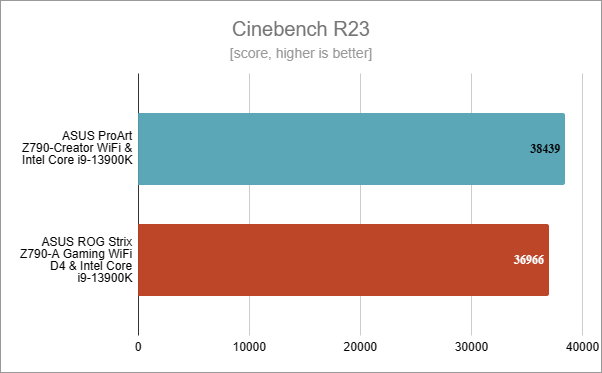
ASUS ProArt Z790-CREATOR WIFI: Benchmark results in Cinebench R23
I saw the same thing in the second rendering benchmark I ran, Blender, where the CPU with the ASUS ProArt Z790-CREATOR WIFI offered a 2.70% increase in performance compared to when I used it on the ASUS ROG Strix Z790-A Gaming WiFi D4.
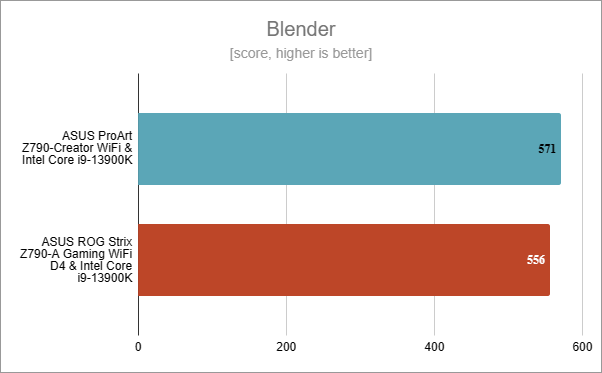
ASUS ProArt Z790-CREATOR WIFI: Benchmark results in Blender
I continued the tests with PCMark 10. This benchmark measures the overall computer performance in a series of different daily tasks such as web browsing, video conferencing, productivity tasks, and digital content creation. When I used the ASUS ProArt Z790-CREATOR WIFI motherboard, I witnessed a performance increase of about 2% compared to the ASUS ROG Strix Z790-A Gaming WiFi D4.
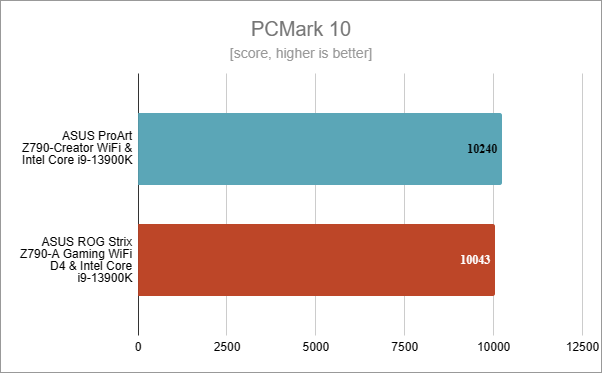
ASUS ProArt Z790-CREATOR WIFI: Benchmark results in PCMark 10
In JetStream 2, a benchmark that measures web browsing performance, using the ASUS ProArt Z790-CREATOR WIFI motherboard, I got a 4.36% increase in performance compared to when using the Intel Core i9-13900K on the ASUS ROG Strix Z790-A Gaming WiFi D4.
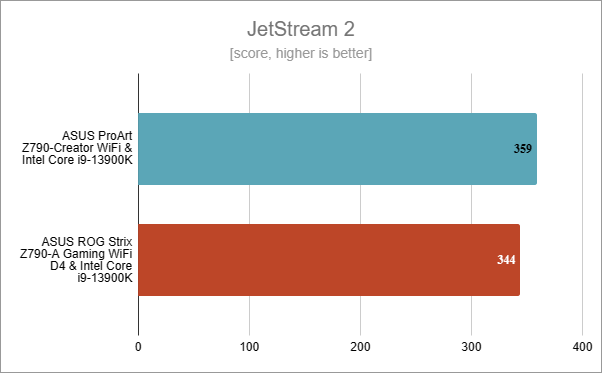
ASUS ProArt Z790-CREATOR WIFI: Benchmark results in JetStream 2
In 7-Zip’s benchmark tool, the DDR5 memory used on the ASUS ProArt Z790-CREATOR WIFI proved to be decisive. Compared to the ASUS ROG Strix Z790-A Gaming WiFi D4, I saw a huge 77.32% increase in performance.
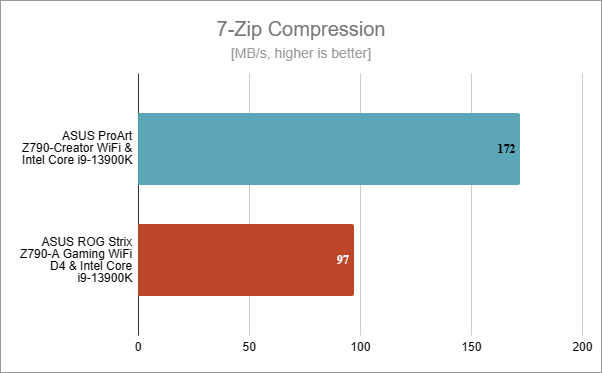
ASUS ProArt Z790-CREATOR WIFI: Benchmark results in 7-Zip Compression
However, the decompression speeds were much closer. The Core i9-13900K was just a bit faster on the ASUS ProArt Z790-CREATOR WIFI than on the ASUS ROG Strix Z790-A Gaming WiFi D4 (2.83% increase in performance).
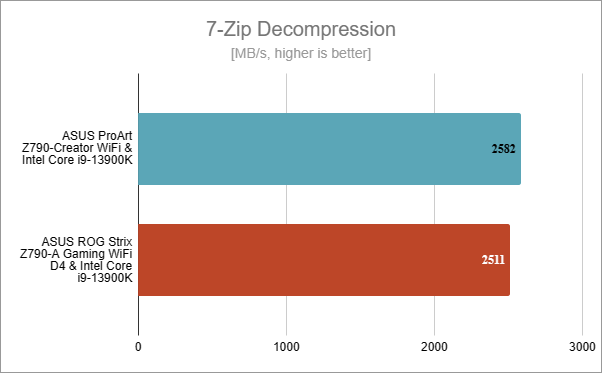
ASUS ProArt Z790-CREATOR WIFI: Benchmark results in 7-Zip Decompression
Next, let’s see what gaming looks like:
In Shadow of the Tomb Raider, using the ASUS ProArt Z790-CREATOR WIFI motherboard, I got 46 frames per second more than when using the ASUS ROG Strix Z790-A Gaming WiFi D4. Although both results are great, the FPS increase (16.43%) is significant and can be attributed to the faster DDR5 memory.
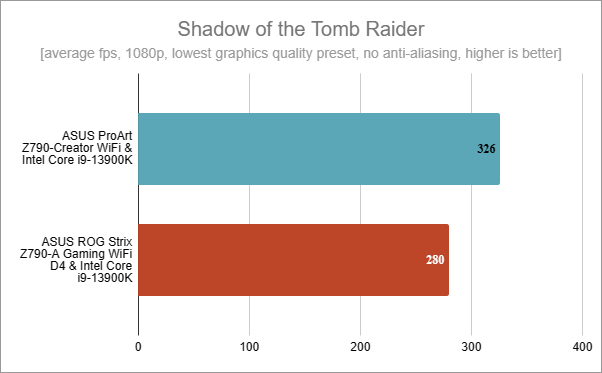
ASUS ProArt Z790-CREATOR WIFI: Benchmark results in Shadow of the Tomb Raider
In Metro Exodus, the number of frames rendered per second was almost exactly the same on both motherboards. This game doesn’t look like it cares for RAM speed.
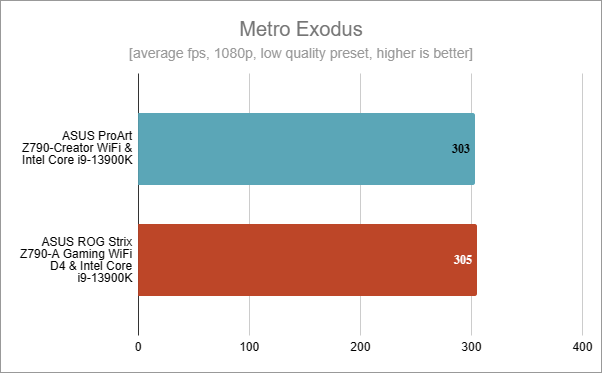
ASUS ProArt Z790-CREATOR WIFI: Benchmark results in Metro Exodus
In Assassin’s Creed Valhalla, the performance increase was, to be honest, higher than I expected, 45.37% to be exact. On the ASUS ProArt Z790-CREATOR WIFI (with DDR5), I got close to 300 fps, while on the ASUS ROG Strix Z790-A Gaming WiFi D4 (with DDR4), the average fps was about 200!
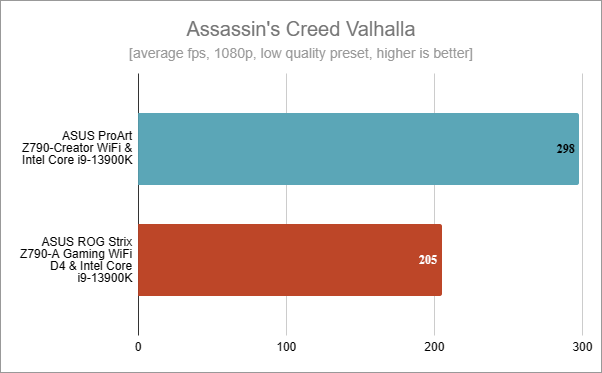
ASUS ProArt Z790-CREATOR WIFI: Benchmark results in Assassin's Creed Valhalla
After testing the Intel Core i9-13900K processor on the ASUS ProArt Z790-CREATOR WIFI, I can only come to the conclusion that this really is a high-end motherboard. Just like the one I compared it to, the ASUS ROG Strix Z790-A Gaming WiFi D4, it squeezes every bit of performance from the processor. Additionally, it also comes with a lot of features and top-notch components, plus support for fast DDR5.
The software bundled with ASUS ProArt Z790-CREATOR WIFI
In terms of software, ASUS’ approach has been the same for the last couple of years. There’s no bloatware coming out of the box, only Armoury Crate, an app where you can see the status of your computer and its main components. On top of that, you can also download and install drivers and additional software (but only if you want to), customize lighting effects, configure fan speeds, turn the processor’s power-saving mode on or off, etc.
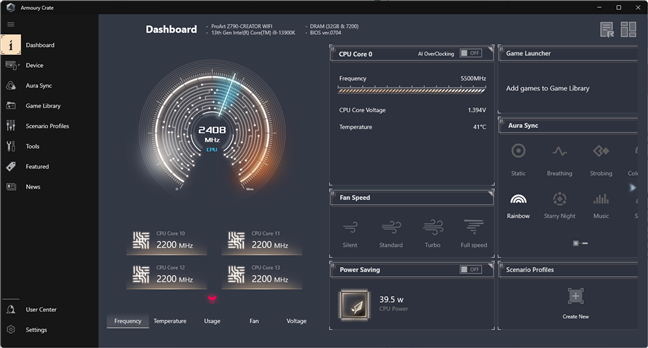
Armoury Crate is the software for ASUS ProArt Z790-CREATOR WIFI
I recommend installing Armoury Crate if you want an easy way of monitoring, configuring, and customizing your motherboard’s features.
What’s your opinion about the ASUS ProArt Z790-CREATOR WIFI?
The ASUS ProArt Z790-CREATOR WIFI is an excellent high-end motherboard that, as you know by now, I like quite a lot. Besides top-notch performance, it offers a lot of features and expansion options, as well as high-quality and powerful components. What’s your opinion about it? Do you intend to buy an ASUS ProArt Z790-CREATOR WIFI? What convinced you? Let me know in the comments section below.


 13.01.2023
13.01.2023 